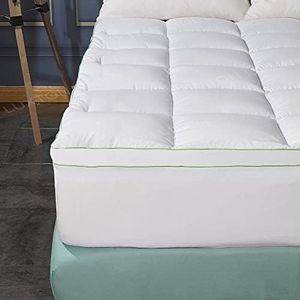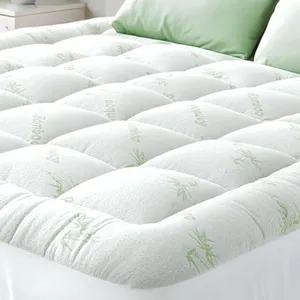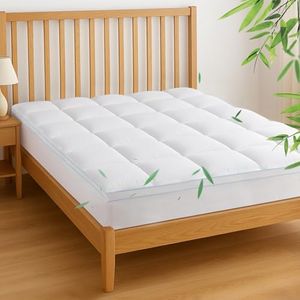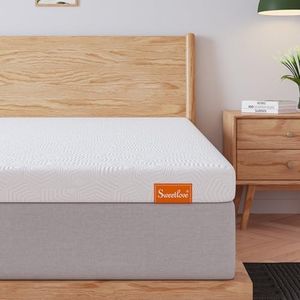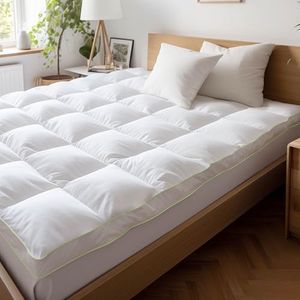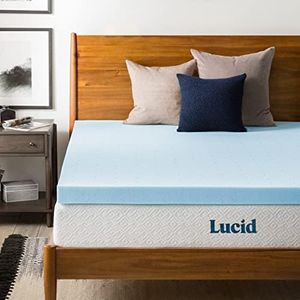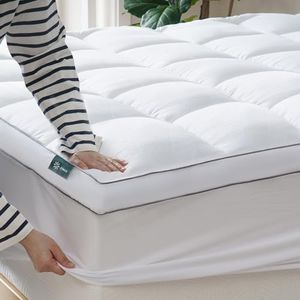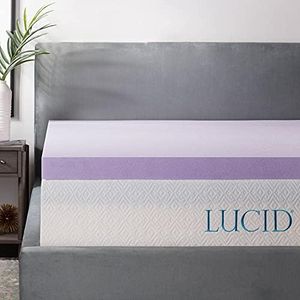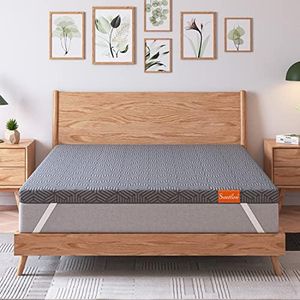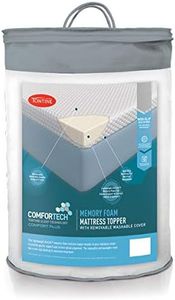We Use CookiesWe use cookies to enhance the security, performance,
functionality and for analytical and promotional activities. By continuing to browse this site you
are agreeing to our privacy policy
10 Best Mattress Topper For Side Sleepers
From leading brands and best sellers available on the web.Buying Guide for the Best Mattress Topper For Side Sleepers
Choosing the right mattress topper can make a big difference in your comfort and sleep quality, especially if you are a side sleeper. Side sleepers tend to place more pressure on their shoulders and hips, so a mattress topper that adds the right blend of support and cushioning is key. When shopping, it’s important to understand which features matter and how they relate to your unique sleeping habits.MaterialThe material of a mattress topper determines its feel, durability, and how well it relieves pressure. The most common options include memory foam, latex, fiber-filled (like down alternative or cotton), and gel-infused foams. Memory foam tends to contour closely to your body, offering good support and pressure relief for side sleepers, while latex is usually a bit bouncier and cooler, and fiber-filled options offer a softer, more plush feel but less support. Think about how much contouring or bounce you prefer, and whether you tend to sleep hot, as some materials like gel-infused foam or latex can help regulate temperature better.
ThicknessTopper thickness generally ranges from 1 to 4 inches. Thicker toppers (3-4 inches) provide deeper cushioning and more pronounced pressure relief, which is often ideal for side sleepers, especially if your mattress feels too firm. Thinner toppers (1-2 inches) give a subtle comfort boost and are better if your mattress is already fairly comfortable but just needs a slight adjustment. If you often wake up with numbness in your shoulders or hips, a thicker topper may be the better choice for you.
Firmness LevelFirmness describes how soft or hard the topper feels. For side sleepers, a medium-soft to medium topper is usually recommended, as this level allows your shoulders and hips to sink in just enough to align the spine naturally. Too soft, and you might lack support; too firm, and it could cause pressure points. It’s all about striking a balance based on your weight and comfort needs—heavier sleepers may need something slightly firmer, while lighter sleepers can go softer.
Pressure ReliefPressure relief is the topper's ability to spread your weight evenly and prevent pressure build-up on sensitive areas like your shoulders and hips. Good pressure relief is especially important for side sleepers prone to aches in these zones. Toppers with memory foam or thicker layers usually excel here. If you’re waking up with pain or numbness, prioritize toppers that mention pressure-relieving properties.
Cooling FeaturesMattress toppers can trap body heat, which can be uncomfortable for some people, especially those who sleep warm. Cooling features may include open-cell foam, gel infusions, breathable covers, or naturally cool materials like latex. Consider these if you tend to get hot at night or live in a warmer climate. If overheating isn’t an issue for you, this may be less of a concern.
Motion IsolationMotion isolation refers to how well the topper absorbs movement, preventing disruptions if you sleep with a partner. Memory foam and other denser materials tend to perform best, while bouncier or fiber-filled toppers might transmit more movement. If you share a bed and are disturbed by movement, seek out toppers known for motion isolation.
Cover and MaintenanceSome toppers come with a removable, washable cover, which makes maintenance much easier. The cover material can also impact comfort and breathability. Look for hypoallergenic or machine-washable covers if you have allergies or want easy cleaning. If cleanliness and low maintenance are priorities, this feature will be especially important.
